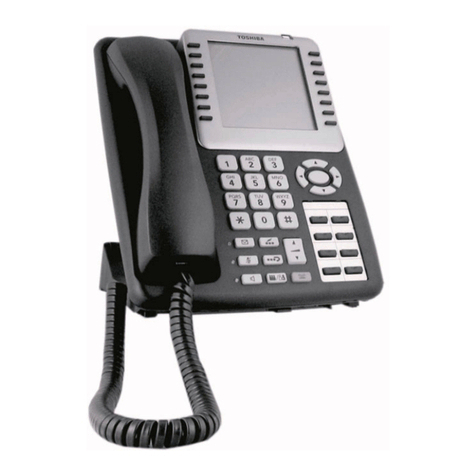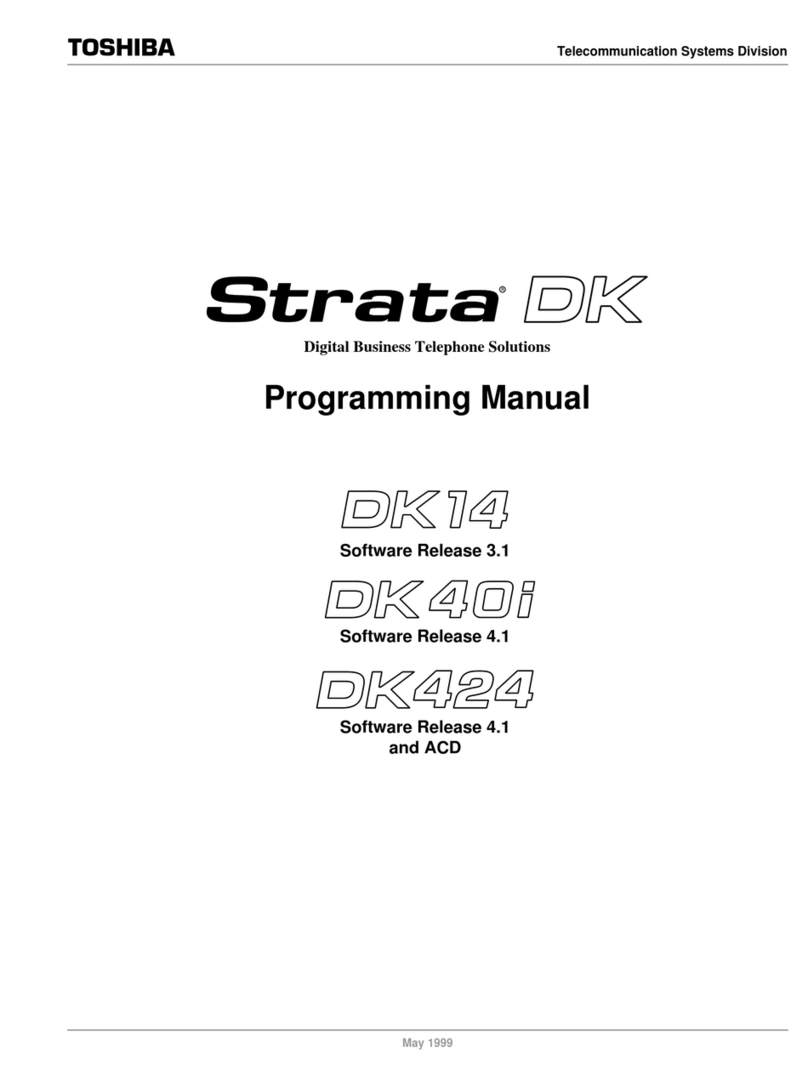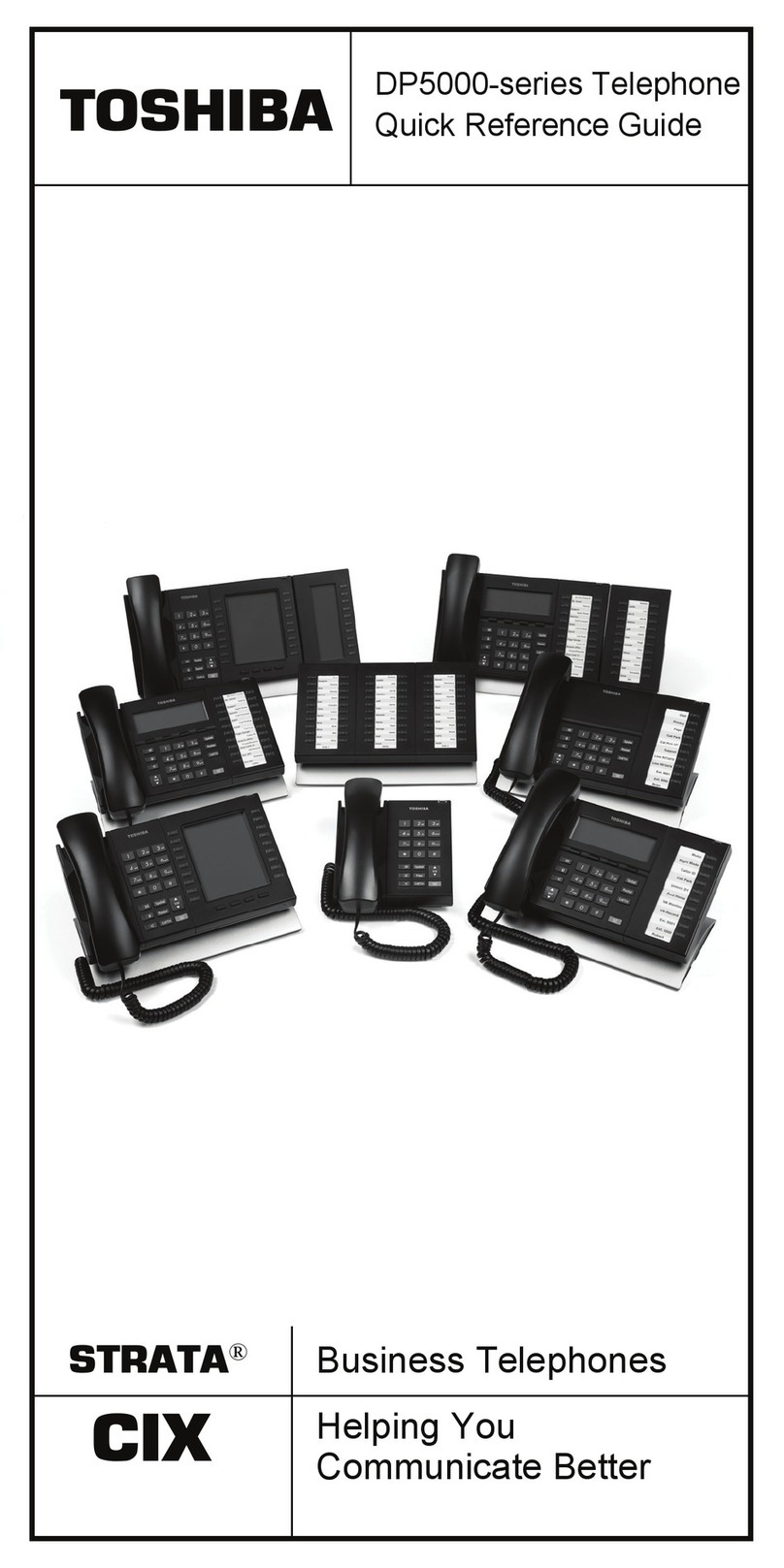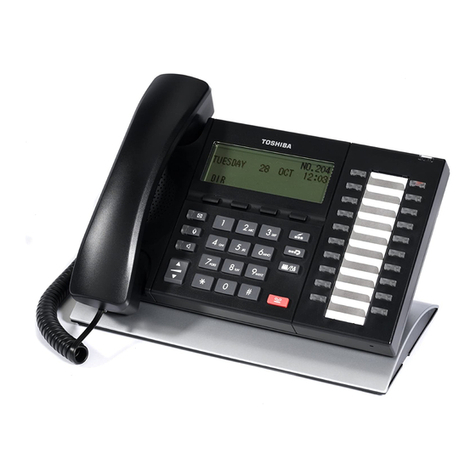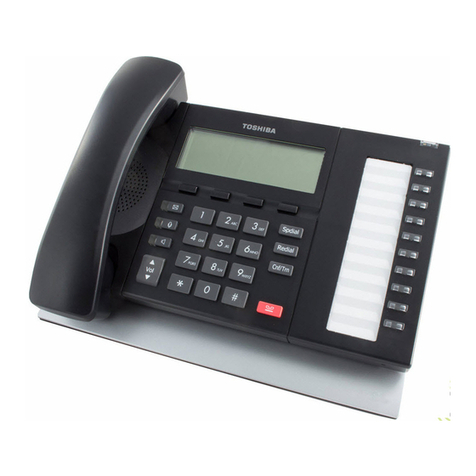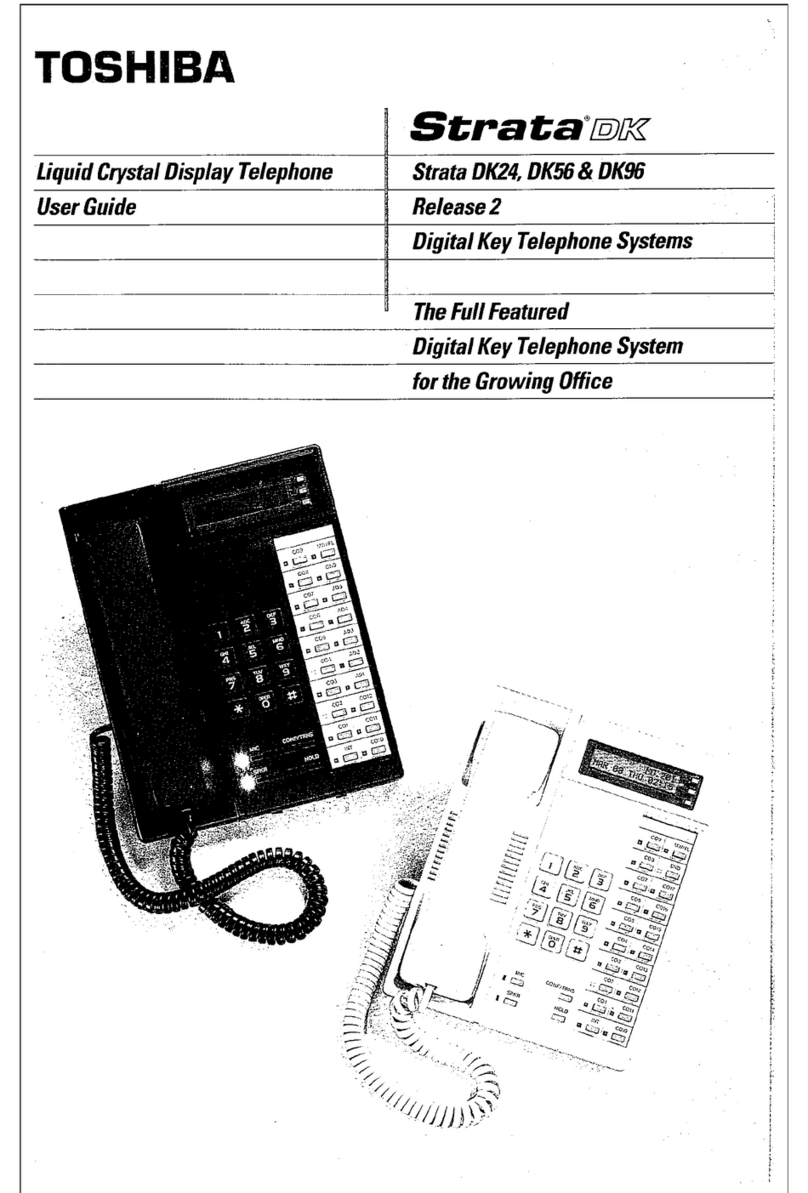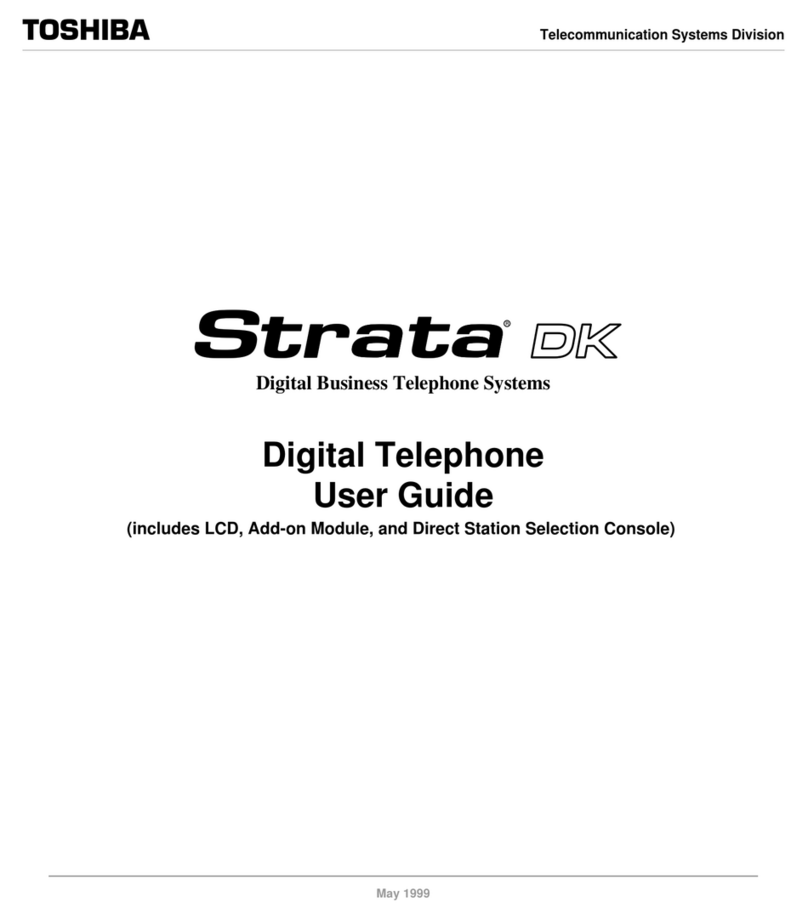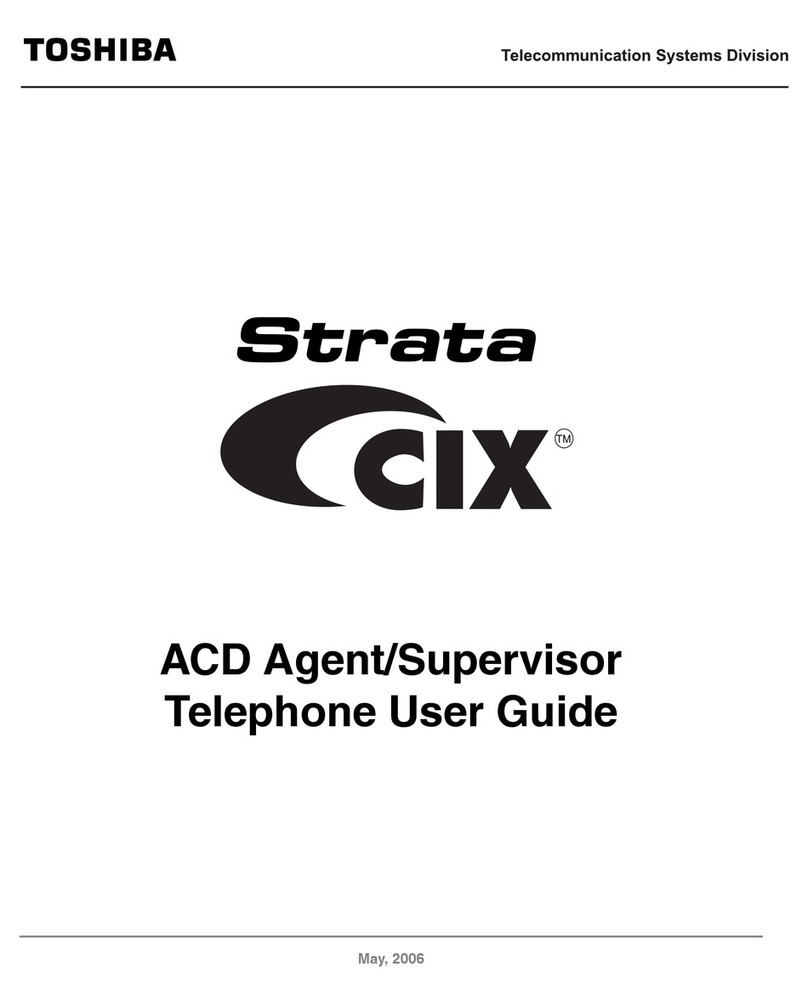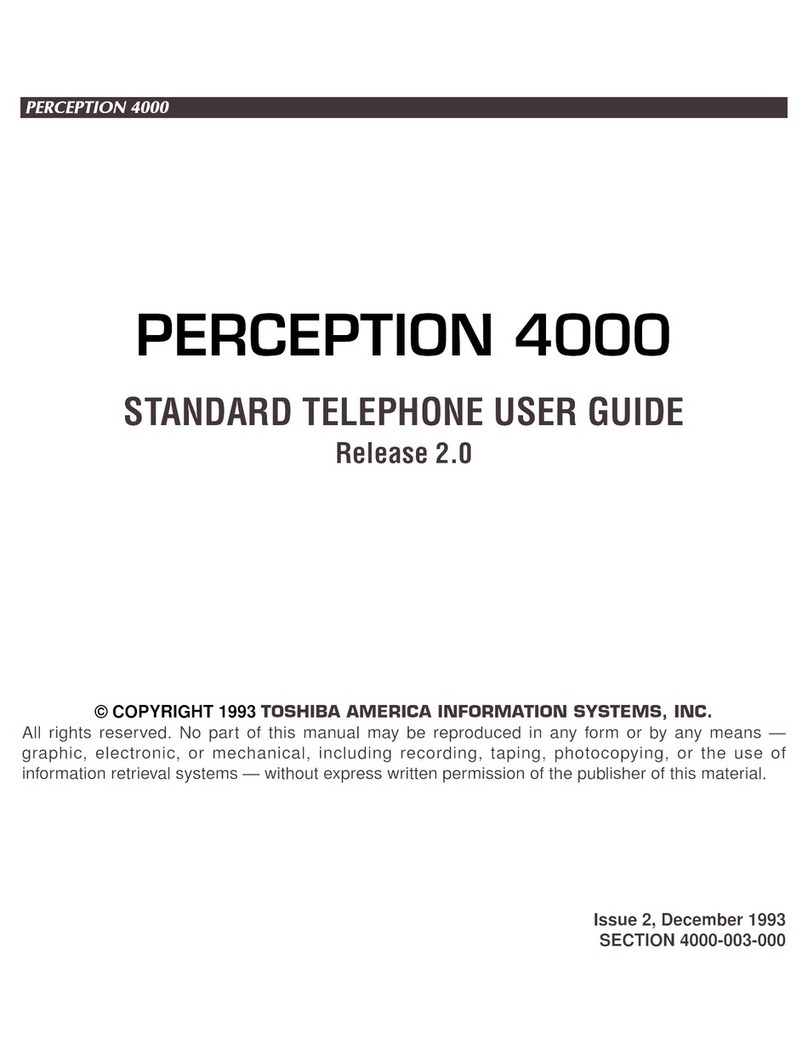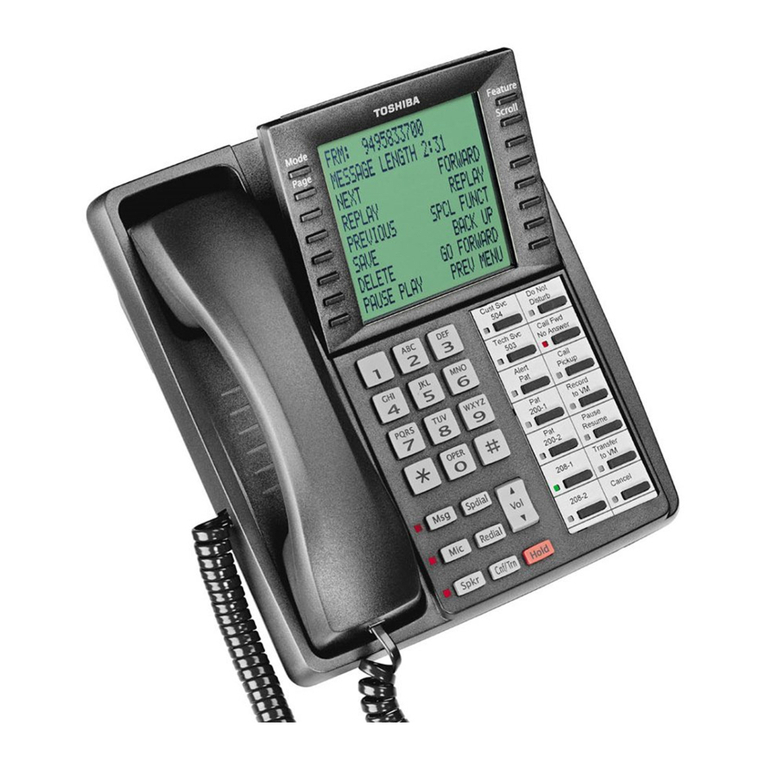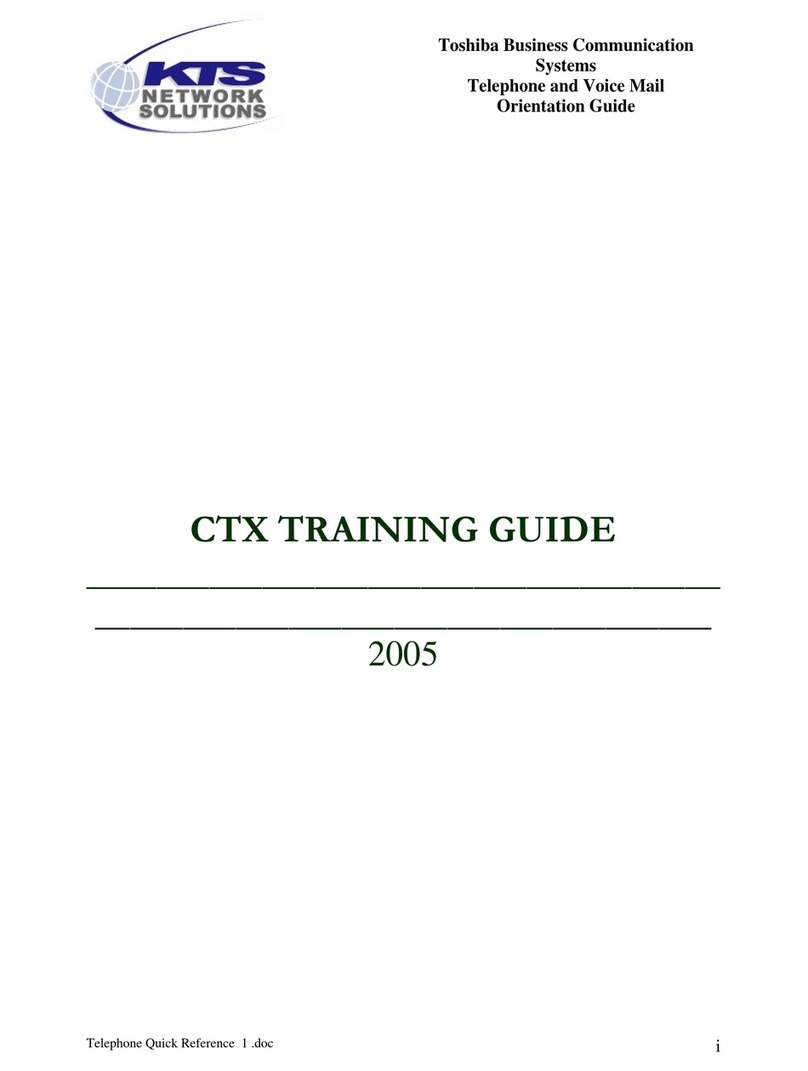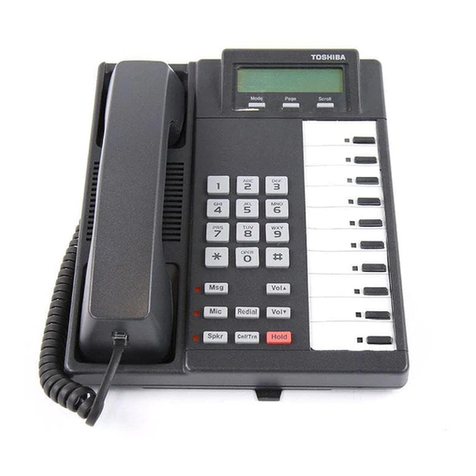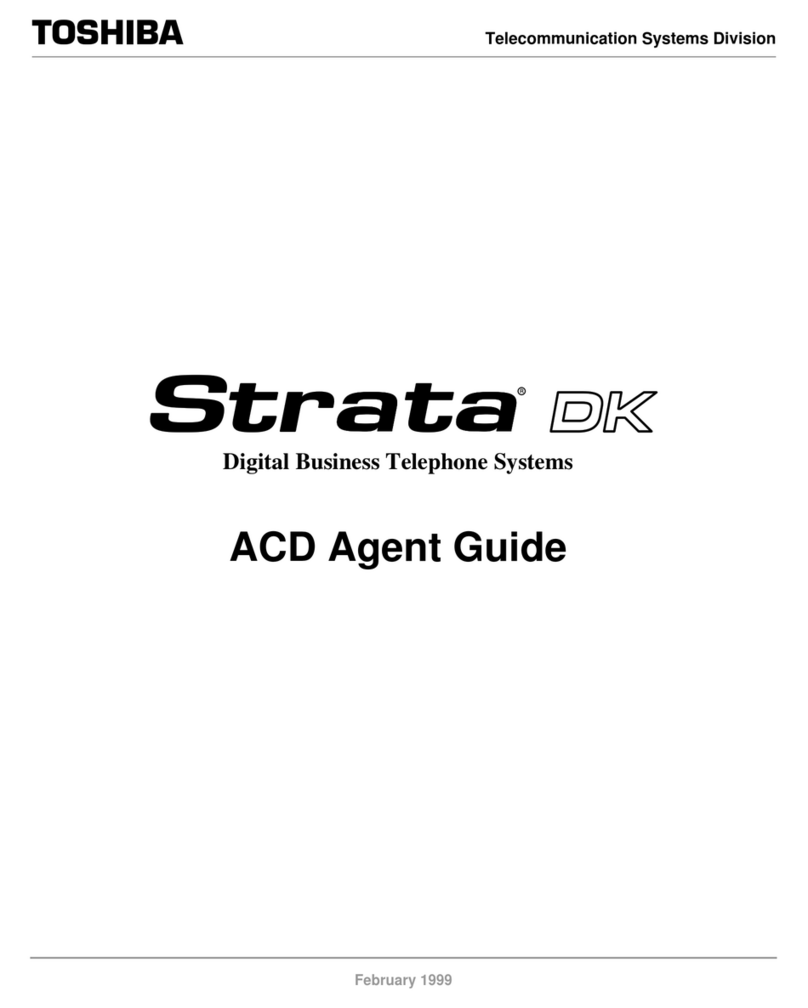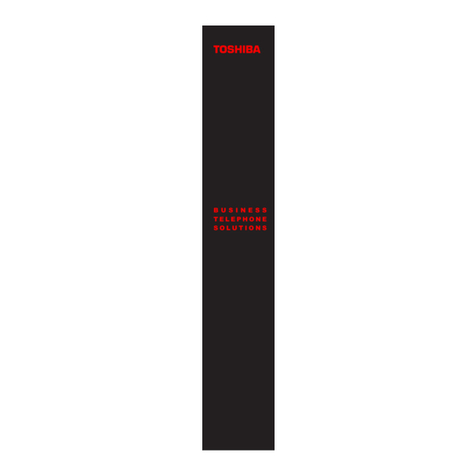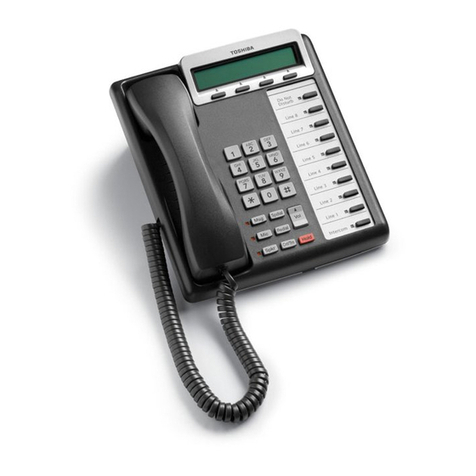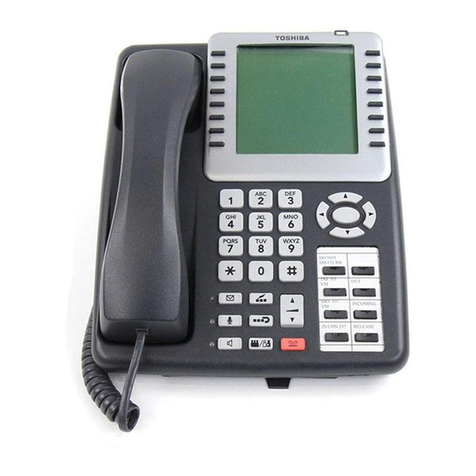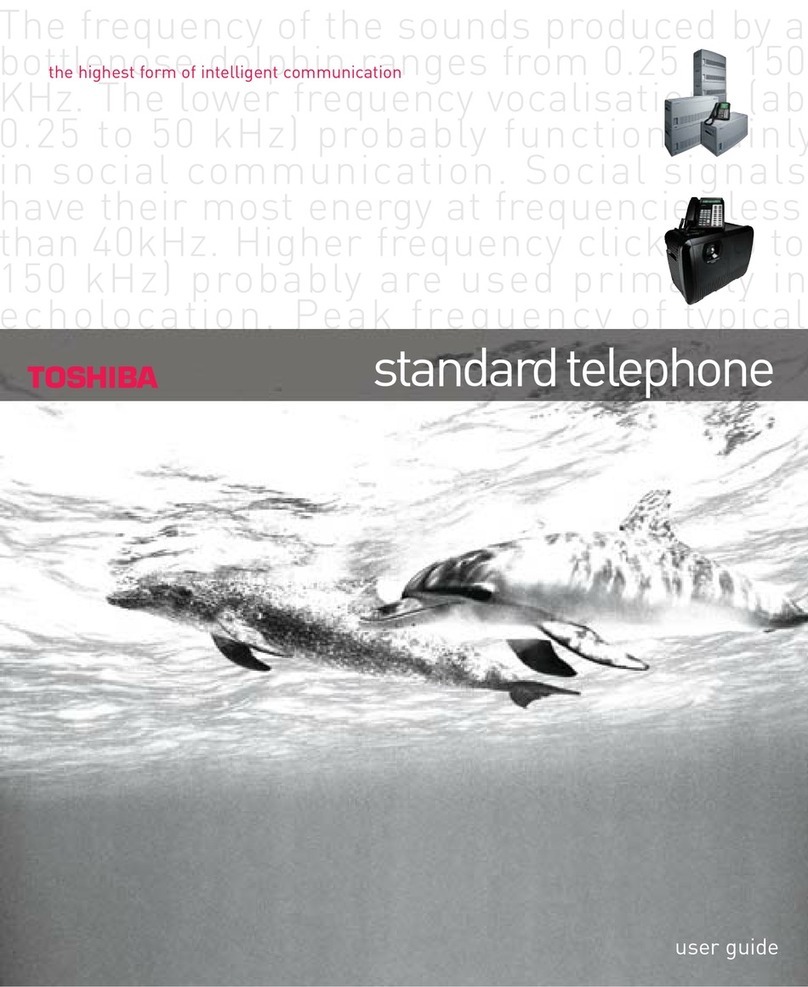
INSTALLATION-INTRODUCTION
SECTION 400-096-201
SEPTEMBER 1992
1-4
digital telephones, the PDKU can support data
interface units (Stand-alone and Integrated), a
digital DSS console (DDSS), and a digital door
phone/lock control unit (DDCB). PDKU1 sup-
ports DIUs or circuit 1~7 only.
PDKU2: The PDKU2 replaces PDKU1. PDKU2 is
identical to the PDKU1, except that the PDKU2
supports DIUs on all circuits (1~8).
PEKU: Electronic Telephone Interface Unit—An
optional printed circuit board (PCB) that pro-
videsthesystemwitheightelectronictelephone
circuits,whichcansupportelectronictelephones,
a Background Music source, a door phone/lock
controlunit(HDCB),anelectronicDSSconsole
(HDSS), and amplifiers for two CO-line confer-
ence calls.
PEMU: E & M TIE Line Unit—An optional printed
circuit board (PCB) that provides the system
with support for four E & M Type I TIE lines.
PEPU: External Page Interface Unit—An optional
printed circuit board (PCB) that provides sup-
port and/or circuit interface mainly for optional
hardwareperipheralsandupgradesassociated
with external paging functions.
PESU (Release 2 and Higher):
Standard Tele-
phone/Electronic Telephone Interface Unit—An
optionalprintedcircuitboard(PCB)thatprovides
the system with a combination of two standard
and four electronic telephone circuits. The stan-
dard telephone circuits can support standard
telephones and optional hardware peripherals,
such as voice mail devices and fax machines.
Except for the Electronic DSS Console, the
PESUelectronictelephone circuitscansupport
thesamestationsandperipheralsthatthePEKU
does.
PIOU: Option Interface Unit—An optional printed
circuitboard(PCB)thatprovidessupportand/or
circuit interface for optional hardware peripher-
als and upgrades.
PIOUS:ThesameasthePIOU,withsomeexcep-
tions;mostnotably,thePIOUShasoneexternal
paginginterface zone,while the PIOU has four.
NOTE:
Each system will support only one of the
following PCBs: PIOU, PIOUS or PEPU.
Port: A term used to identify a station circuit
location. Each station and TIE line hardware
circuitisassignedtoastationportnumber(00~
95) in system software.
PPTC: A Toshiba-supplied adapter that is used to
connectthemodularSMDRand/ormaintenance
ports of the PIOU or PIOUS to the DB-25 con-
nector of a printer, terminal, modem, or call
accounting machine.
PSTU1: Standard Telephone Interface Unit—An
optional printed circuit board (PCB) with a built-
inringgeneratorthatprovidesinterfaceforeight
standard telephones or optional hardware pe-
ripherals (voice mail devices, a Background
Music source with Release 4, fax machines,
etc.).
PSTU2:StandardTelephoneInterfaceUnit—Pro-
vides same function as the PSTU1 with the
addition of a switch to select high or low ringing
generator voltage.
RAM: Random Access Memory—Refers to the
type of system memory that holds individual
systemconfigurationandfeatureprogramming.
RAM is read/write memory, and can be easily
revised in programming.
ROM: Read Only Memory—Refers to the type of
system memory that holds static software that
comprises the mechanics of the features’ func-
tions. ROM is only revised by Toshiba software
engineers.
4.10 Use of Notes, Important Notes, Cautions,
and Warnings
4.11 Notescallattentiontospecificitemstoelabo-
rate, or to refer the reader to other information.
4.12 ImportantNotesare usedwhen the informa-
tion is considered to be very important.
